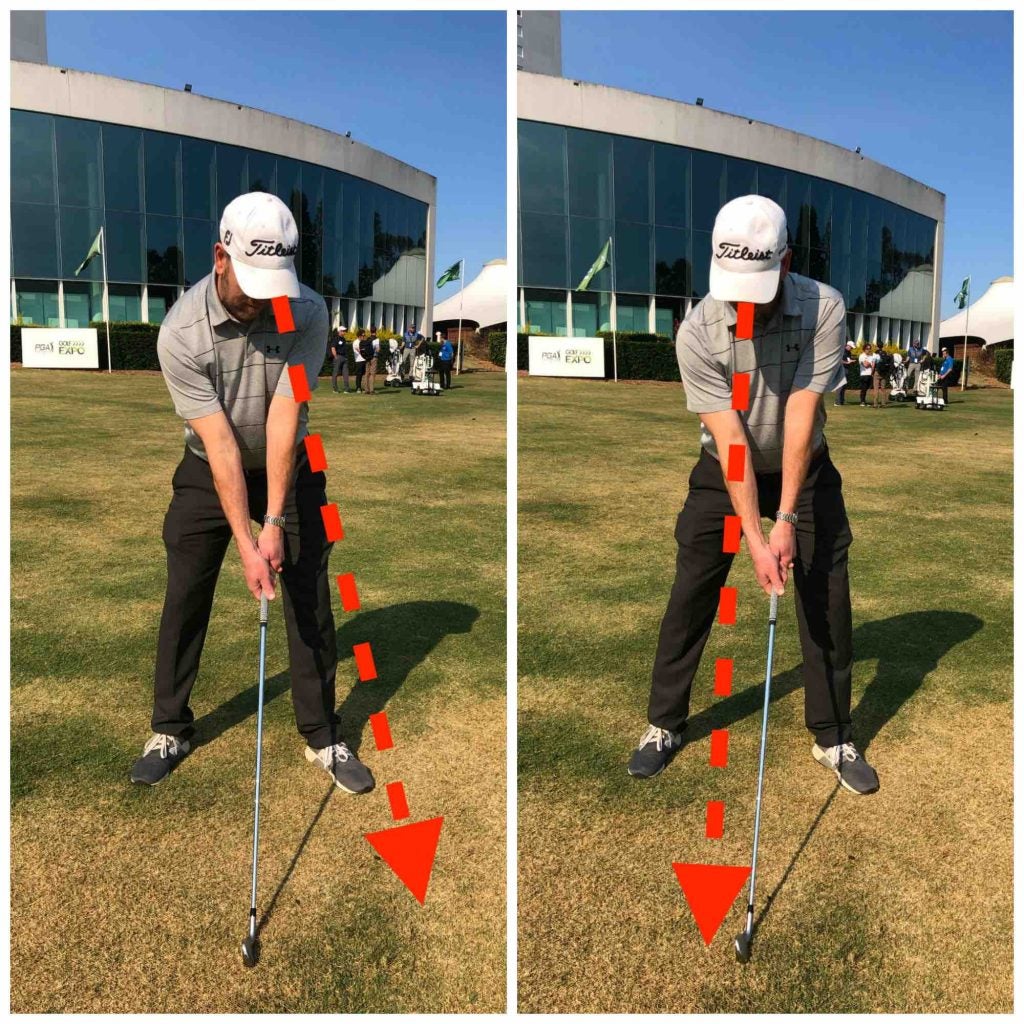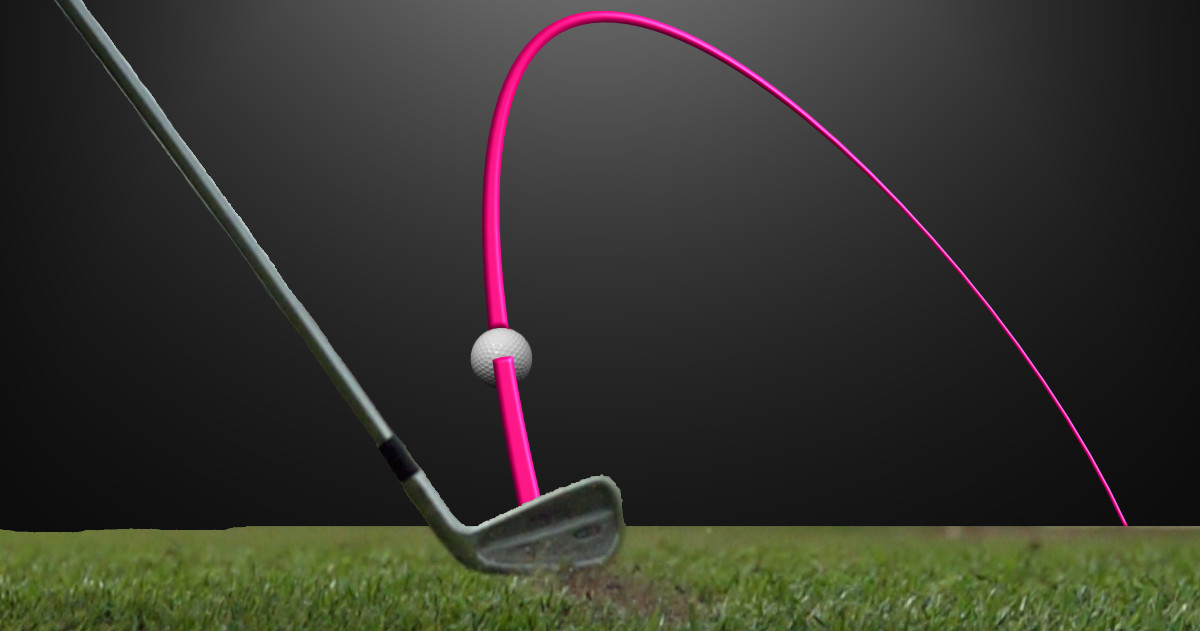A golf slice is a shot that follows a curved path from left to right through the air for a right-handed golfer. The ball typically starts off to the left of the target and travels too far to the right, resulting in a loss of distance and accuracy. This type of shot is known as a classic slice. On the other hand, a push slice occurs when the ball starts off to the right of the target. Then curves even further to the right. This shot can be caused by issues with the golfer’s swing technique, clubface position, or grip. To improve their slice, golfers may need to work on correcting these issues through practice and instruction from a golf professional.
Table of Contents
What causes a slice in golf?
In golf, a slice is a shot that travels in a curve from left to right (for a right-handed golfer) due to an open clubface at impact.
The amount that the clubface is open in relation to the swing path determines the severity of the slice.
A clubface that is slightly open, such as 3 degrees, can produce a fade, which is a shot that curves gently to the right. A more pronounced slice will occur if the clubface is more open, such as 6 degrees.
On the other hand, if the clubface is closed in relation to the swing path at impact, it can produce a draw or hook, depending on the degree of closure. A draw is a shot that curves gently from right to left, while a hook is a shot that curves sharply in the same direction.
How To Fixing Your Golf Slice
1. ADJUST YOUR GRIP
The grip is a crucial element of golf because it is the only point of contact between your body and the club. The position and pressure of your grip can significantly impact your ball striking and shot shape. Many golfers slice the ball due to a grip that is too weak, particularly in the left hand (for right-handed golfers). A stronger grip can help you take the club back in a more neutral position and on the correct swing plane, reducing or eliminating the slice and potentially enabling you to hit a draw. Even a neutral grip can improve your ball striking and help you hit the ball straight.
2. Fix your posture
Many golfers struggle with proper hinging at the hips and tend to rely too much on knee flex, resulting in a poor posture that causes them to crowd the ball and swing in a steep, out-to-in path. However, this issue can be addressed through a few simple steps.
Many golfers struggle with proper hinging at the hips and tend to rely too much on knee flex, resulting in a poor posture that causes them to crowd the ball and swing in a steep, out-to-in path. However, this issue can be addressed through a few simple steps:
- Stand upright with your club in both hands and place it against your hips.
- Hinge forward from your hips, maintaining a straight posture.
- Grip the club as you normally would when preparing to hit a shot.
- Allow your knees to bend slightly when you feel the tension in your hamstrings.
- Position the club lightly on the ground, with your weight distributed between your heels and the middle of your feet.
3. Check Your Equipment
The golf clubs you use can contribute to slices. Many amateur golfers use unfitted or second-hand clubs, which can have overly stiff shafts.
Shaft flex refers to the ability of a golf shaft to bend during the swing. Golfers with faster swing speeds are usually recommended to use a stiffer shaft flex to prevent excessive shaft distortion.
The appropriate shaft flex for you will depend on your swing speed and driving distance. As a general guide:
- X Flex (Extra Flex): For swing speeds of 110 mph or more and driving distances of 270 yards or more
- S Flex (Stiff Flex): For swing speeds of 100-110 mph and driving distances of 240-270 yards
- R Flex (Regular): For swing speeds of 80-100 mph and driving distances of 210-240 yards
- A or M Flex (Amateur or Senior): For swing speeds of 75-85 mph and driving distances of 180-210 yards
- L Flex (Ladies): For swing speeds of 75 mph or less and driving distances of less than 180 yards
To determine your swing speed and driving distance accurately, you can use a TrackMan Golf simulator or similar technology at a local golf store.
4. Ball Positioning
5. Monitor your stance
Establishing a proper stance is an essential step in eliminating a golf slice. It is important to find a balance between a stance that is too wide and one that is too narrow.
A stance that is too wide can make it difficult to shift your weight and make it harder to hit regular shots. When a golfer’s stance affects their shots, it is often because they are aiming too far left, which can prevent them from squaring the clubface and result in a shot that goes dead left.
On the other hand, aiming too far right can cause a golfer to come over the top and hit a pullback shot toward the target.
To find a balanced stance that promotes proper ball striking and minimizes the slice, golfers should aim to find a point between these two extremes.

Credit: golf.com
The Best Way to Fix It is to Seek Professional Help from a Certified Instructor Who Can Assess Your Individual Swing And Make the Necessary Corrections
Are you struggling with your golf swing? If so, you’re not alone. Many golfers struggle with their swings and can never fix them.
The best way to fix your swing is to seek professional help from a certified instructor who can assess your swing and make the necessary corrections. Certified instructors have years of experience and know precisely what needs to be done to correct a golf swing. They will be able to look at your swing and diagnose any problems you may be having.
Once they identify the problem, they will be able to give you specific instructions on how to fix it. If you want to improve your golf game, seeking professional help from a certified instructor is the best way to go about it. With their help, you can fix your swing in no time!
Conclusion
It is possible to learn how to fix a slice in golf. Many golfers slice the ball because they do not understand the underlying cause of the slice, which is an open clubface at impact in relation to the swing path. By making the appropriate setup and swing adjustments, such as those mentioned in previous responses, golfers can work to square the clubface and change the flight shape of their shots. The ultimate goal is to hit the ball with a square or slightly closed clubface in relation to the swing path. With practice, you should be able to transform your slice into a draw.

